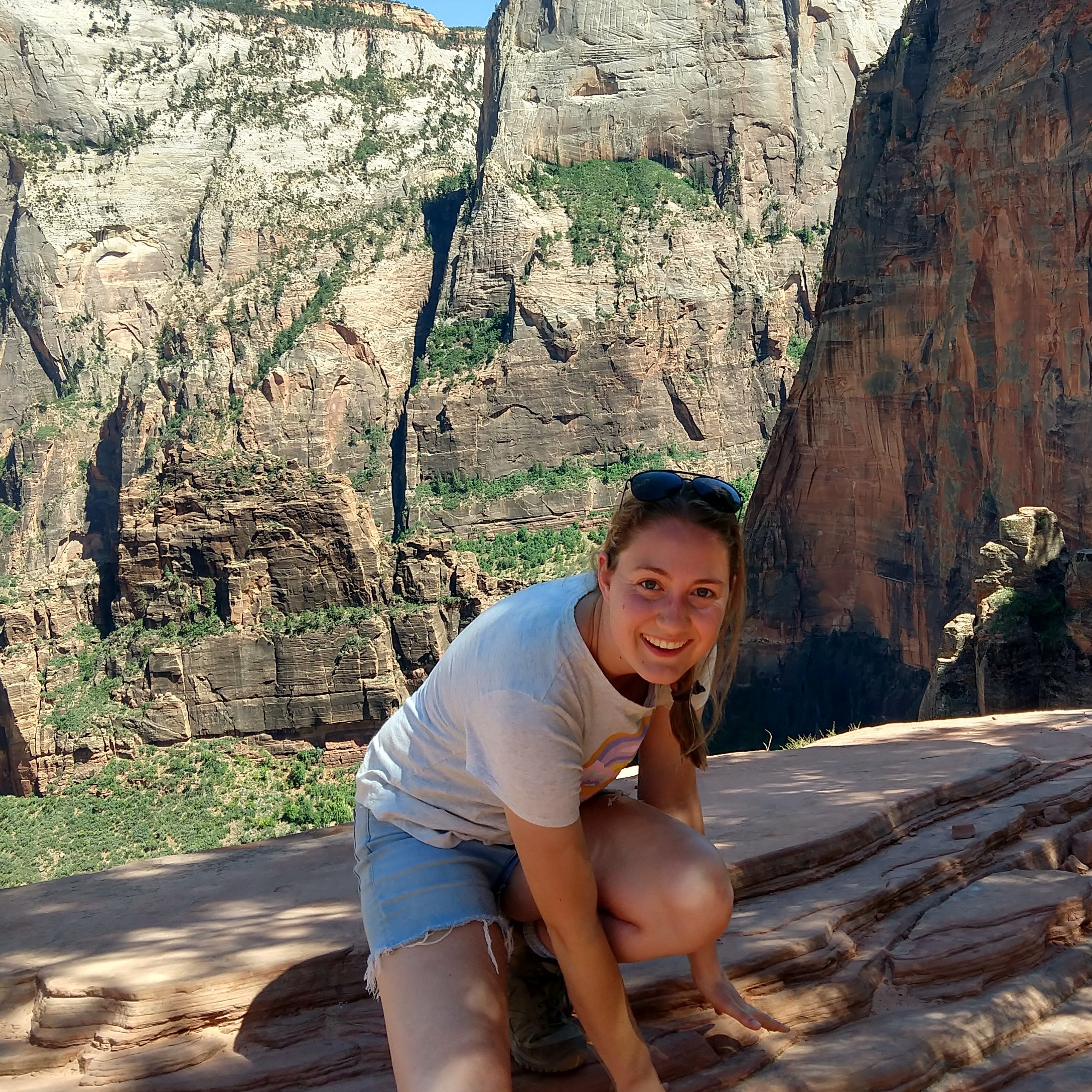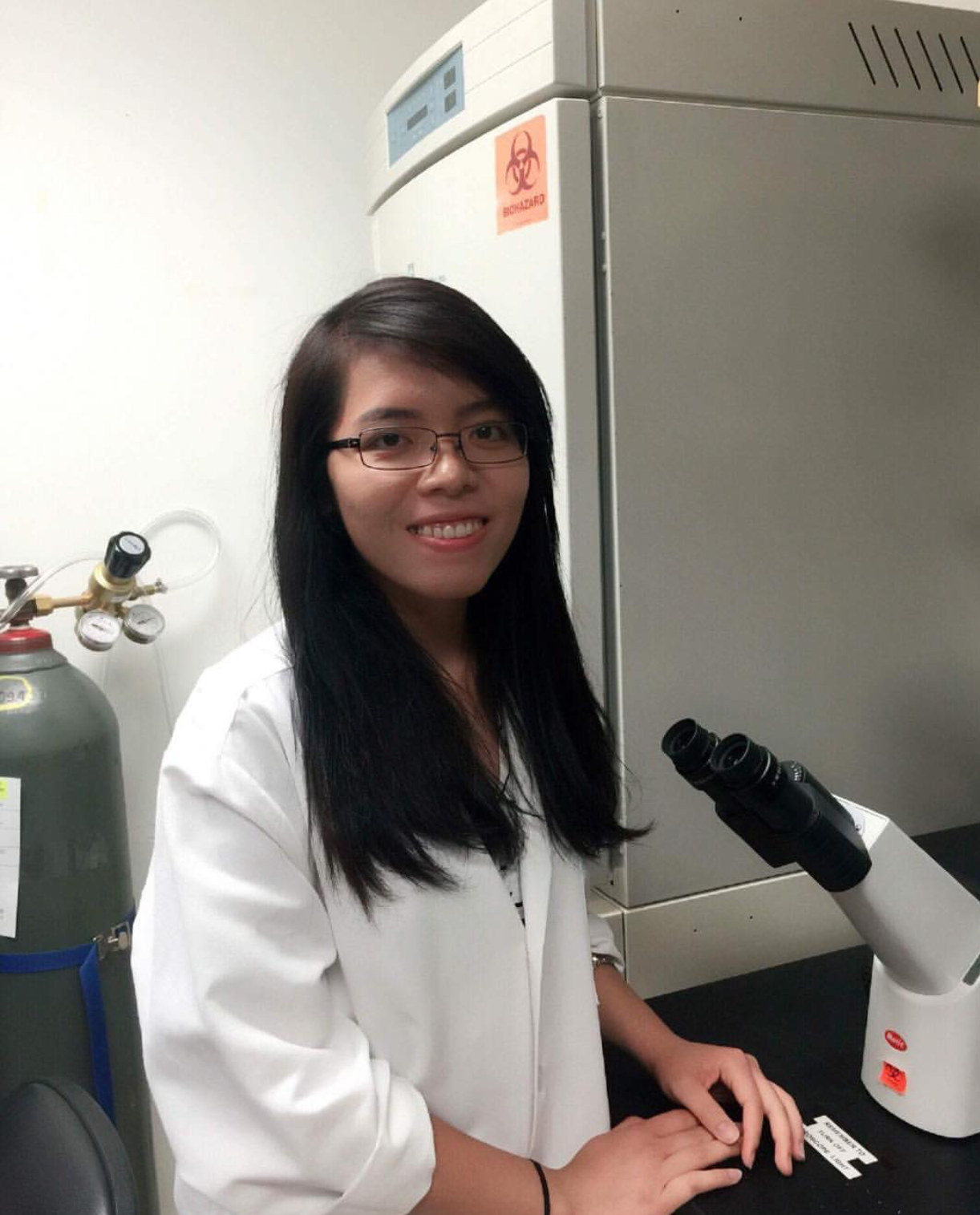Student-Led Seminar Series
Established in 2016-17, the Graduate Student-Led Seminar Series Committee is responsible for organizing and inviting seminar speakers providing our students with access and networking opportunities to a variety of experts and exciting topics. If you are a Chem & Biochem graduate student and have a potential speaker in mind, please fill out the form below or contact the committee members listed.
2019-20 Student-Invited Speaker Committee
|
Ember Tota |
Mariam Salib |
Benjamin Jagger |
|
Nicole Peiris |
Sean Purcell |
Eleanor Castracane |
|
|
|
|
|
Aileen Button |
Taryn Lucas |
Kelly Hunter |
|
|
|
|
|
Hoang Nguyen |
Joey Palomba |
Sindhana Selvi Pannir Sivajo |
Upcoming Events
Dr. Cody Schlenker (University of Washington) Seminar - February 13, 2020
Molecular design for ultrafast photoinduced H-atom abstraction
Thursday, February 13th, 2020, 11:00am, Pacific Hall Rm 4500
|
|
Abstract: We utilize ultrafast multi-pulse pump-push-probe transient absorption spectroscopy and time-resolved photoluminescence to monitor excited-state H-atom transfer from hydroxylic compounds to the heptazine derivative 2,5,8-tris(4-methoxyphenyl)-1,3,5,6,7,9,9b-heptaazaphenalene (TAHz). The heptazine moiety is structurally related to the monomer unit of the ubiquitous organic polymeric photocatalyst, carbon nitride. We show that TAHz can photochemically abstract an H-atom from water, in addition to generating H2 in aqueous suspensions with photocatalytic activity matching that of carbon nitride. In our multi-pulse experiment, we use resonant pump pulse to photoexcite TAHz to a bright high-lying excited state, and after a relaxation period of roughly 6 ps, we use a NIR (1150 nm) pulse to “push” the chromophore to a higher-lying excited state. When phenol is present, the push induces a persistent decrease (ΔΔOD) in the initial excited-state absorption, indicating the push pulse engenders a divergence in the photochemical branching ratios. In the presence of electron-donating substituted phenols, the magnitude of ΔΔOD diminishes markedly due to the increased excited-state reactivity of the complex accompanied by the cathodic shift in the phenol oxidation potential. Thus, the H-atom abstraction appears to proceed without aid from the additional energy of the push pulse. These results reveal new insight into the branching ratio among unreactive localized heptazine excited states and reactive intermolecular charge transfer states of H-bonded heptazine chromophores. More generally, this work provides new insight into molecular design strategies to control the excited-state photochemistry of aza-aromatic materials toward important reactions such as H-atom abstraction from water. |
Dr. Rhiju Das (Stanford) Seminar - March 19, 2020
Thursday, March 19th, 2020, 1:00pm, NSB Autditorium
Past Events
Dr. Keary Engle (TSRI) Seminar - June 6, 2019
New Strategies for Selective Alkene Functionalization
Thursday, June 6th, 2019, 11:00am, NSB Auditorium 1205
|
|
Abstract: Vicinal (1,2-disubstituted) functional group motifs are ubiquitous in structurally complex small molecules that are of academic and industrial importance, including many widely used pharmaceutical agents. Many such functional group combinations, however, remain exceptionally challenging to synthesize. The goal of research in the Engle lab is to develop a general catalytic platform for alkene and alkyne difunctionalization to introduce a diverse array of functional groups at each of the two carbon atoms in a programmable fashion. Our central hypothesis is that coordination of a π-Lewis acidic metal, such as palladium(II), to the alkene will promote nucleophilic attack and that the resultant organometallic species can be trapped with an electrophile to furnish the desired 1,2-difunctionalized product. In the overall net transformation, one of the two new functional groups is introduced in the form of a nucleophile, and the other in the form of an electrophile. Directing groups are used to control the regiochemical course of the reaction and stabilize key alkylmetal intermediates. These concepts have been used to expand the synthetic toolkit to include new retrosynthetic disconnections, including “homo-Michael” addition and β,γ-vicinal dicarbofunctionalization of alkenyl carbonyl compounds. |
Dr. Felice Lightstone (LLNL) Seminar - May 30, 2019
Bridging the scales: a machine learning directed macro to micro scale simulation to model RAS initiation of cancer
Thursday, May 30th, 2019, 2:00pm, NSB Auditorium 1205
|
|
Abstract: Molecular dynamics (MD) simulations can reveal the atomistic scale mechanisms of biological systems in great detail. However, MD calculations are computationally intensive, and many important biological phenomena are inaccessible because of large time and length scales. To overcome some of these limitations, Pilot 2 of the Joint Design of Advanced Computing Solutions for Cancer in collaboration with International Business Machines Corporation (IBM) are developing a new type of massively parallel, multiscale simulation framework in which machine learning couples a novel continuum model to an ensemble of MD simulations. The result is simulations at macro length and time scales with microscopic precision and self-adaptation. I will report on the deployment of this scalable framework on Sierra (currently ranked third on the TOP500 supercomputing list) and our results of simulations of RAS proteins at physiological concentration on a (1x1 micrometer) cell membrane. |
 Dr. Lightstone presents on her research modeling RAS initiation of cancer to UCSD graduate students
|
 Dr. Lightstone (second from left) with SLSS-committee members (l-r) Taryn Lucas, Benjamin Jagger, and Kelly Hunter
|
Dr. Morgan Cable (JPL) Seminar - April 17th, 2019
Exploring Ocean Worlds
Wednesday, April 17th, 2019, 11:00am, Tata Hall Auditorium
|
Dr. Morgan Cable is a Research Scientist at the NASA Jet Propulsion Laboratory in Pasadena, California. She worked on the Cassini Mission as a Project Science Systems Engineer, and is currently a member of the Project Science Team for the Europa Clipper Mission. Morgan’s research focuses on organic and biomarker detection, through both in situ and remote sensing techniques. While earning her Ph.D. in Chemistry at Caltech, she designed receptor sites for the detection of bacterial spores, the toughest form of life. As a NASA Postdoctoral Fellow at JPL, Morgan developed novel protocols to analyze organic molecules such as amines and fatty acids using small, portable microfluidic sensors. Currently Dr. Cable performs laboratory experiments to study the unique organic chemistry of Titan, a moon of Saturn. She and colleagues were the first to discover a co-crystal, the equivalent of a ‘hydrated mineral’, made exclusively of organics that may exist on Titan’s surface. This work has led to the inception of a new field, Titan ‘petrology’. Morgan also conducts field work in extreme environments on Earth, searching for life in places such as the Atacama Desert, the summit of Mt. Kilimanjaro and the lava fields in Iceland. |
 |
 |
Above, SLSS Seminar Leaders Alex Mantanona, Kayla Busby, and Jessie Moreton pictured with invited speaker Dr. Cable (right).
Dr. Robert Spitale (UCI) Invited to Speak for 2018-19 Seminar Series
Tuesday, October 2nd, 2018, 2:00pm, NSB 1205
 |
Chemical Tools to Analyze the Transcriptome Abstract: Proper gene expression is essential for the survival of every cell. Once thought to be a passive transporter of genetic information, RNA has recently emerged as a key player in nearly every pathway in the cell. A full description of how RNAs contribute to cellular identity and form into complex structures within cells are critical to understanding RNA function. I will detail the design and utility of chemical reagents used in RNA structure probing and the tracking of RNA synthesis. I will also outline how these reagents have been used to gain a deeper understanding of RNA structure and gene expression programs in vivo. |
Dr. Neil Garg Invited to Speak at UC San Diego Chemistry & Biochemistry
|
Wednesday, May 3rd, 2017. The UCSD Chemistry & Biochemistry Graduate students hosted Dr. Neil Garg from UCLA as a part of the student-invited seminar series. Neil got to meet with several students, a group of TA’s at a teaching roundtable, SWIGS, and various chemistry faculty. He gave an exciting lecture about his research on breaking amides as well as enlightened us about his innovative approaches to teaching undergraduate organic chemistry lecture and lab. He also shared valuable insights on his career path and the roles of research, teaching/mentorship, and outreach in academia. Dr. Garg notes, “I had a great time meeting with the students and faculty at UCSD! It was especially refreshing to see the high level of excitement surrounding teaching and outreach amongst the students and faculty.” The student committee is very grateful for his visit and we hope that his excitement and energy will leave a lasting impression upon the department.
|
|
Neil presents on his work probing new reactivities, breaking amides as well as his teaching outreach endeavors. |
|
The Student-Invited Speaker Committee with Neil and his chemistry coloring book. Left to right, Chris Lee, Clare LeGuyader, Jessie Peters, Sarah Barnhill, Neil Garg, Quint Frauman (not pictured Lewis Churchfield). |
|
Dr. Garg meeting with TA’s at our teaching roundtable led by Cory Weinstein (Bertrand lab) & Riley Peacock (Komives lab). |
Student-Invited Speaker Committee Invites Dr. Geri Richmond as Inaugural Speaker
On February 28th and March 1, 2017, Dr. Geri Richmond was invited by the Student-Invited Speaker Committee as the inaugural speaker of the newly established Student-Led Seminar Series. The selection of Dr. Geri Richmond was based on graduate student interest in career development and careers in science. Dr. Richmond led a very successful workshop entitled "The Art of Persuasive Communication and Negotiation that was very valuable and informative for both Chemistry/Biochemistry graduate students as well as Computer Science graduate students. She also led an open forum on "Reflections on Today’s Scientific Career Options: What I Wish I Would have Known as a Graduate Student."

















